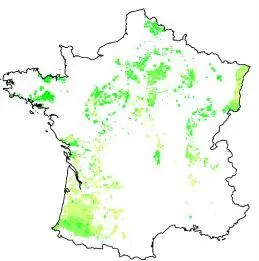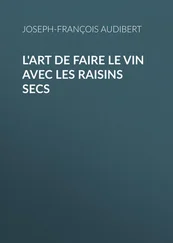“Modeling is a synthetic expertise of the knowledge available to a community at a given time. One of the most promising approaches is to reconcile these classes of models with the statistical processing of simulation data. The efficiency and reliability of ‘Big-Data’ techniques is increasing, and it is not excluded that they may eventually replace models based on equations…”.
Simulations involve equations coupling different scales (plant, plot, farm or agricultural region). They require a large amount of data and still require very long computational times. Despite these current limitations, which artificial intelligence algorithms help to push back, modeling in agriculture is becoming more widespread and a tool for scientific debate and political decisions. Let us listen to the researchers involved in the development of models through a few examples.
1.3. Decision-making support
Farmers, political and economic decision makers, and consumers shape the landscape of agricultural practices to varying degrees, each acting at its own level: by guiding a continental agricultural policy, by deciding to invest in a new machine tool, or simply by doing one’s shopping. Different agents, actors and practices influence it and the behaviors of each have societal and environmental consequences.
Some agricultural practices have potentially negative impacts on climate and biodiversity, for example [BEL 19]. The disappearance of many insect species is attributed to the destruction of their habitat by intensive agriculture and their poisoning by the widespread use of pesticides [HAL 17, SAN 19]. How can these harmful effects be anticipated and limited? How can climate change be taken into account in current and future practices [BAS 14]? What is the best combination of agricultural practices that makes it possible to produce while guaranteeing a country’s food sovereignty? How can we legislate and cultivate for the benefit of the greatest number of people? Hélène Raynal, researcher at INRA and project manager of a digital platform dedicated to agrosystems [BER 13] provides an initial answer:
“Different models aggregated within a shared computer system make it possible to represent agricultural systems taking into account their complexity. Modeling should be able to represent biological processes, such as plant growth. They must also make it possible to account for physical processes related, for example, to water (evaporation of water from the soil, drainage of water to the deep layers of the soil, etc.), carbon and nitrogen, which are the factors that determine agricultural production. They must also integrate the climate dimension or farmers’ practices (such as irrigation levels), and socio-economic aspects. These processes fit into different scale levels and, depending on the issue, the model is used to simulate a cultivated field, an agricultural operation – or even an entire region. The aim is to integrate as much relevant information as possible into the model, from soil chemistry to local climate factors, agricultural practices and assumed market trends or climate changes. Simulations make it possible to play on various scenarios and estimate the impact of a decision taken by stakeholders in the sector on agricultural production. They can also help to design new agricultural systems adapted to different issues, such as climate change and the reduction of chemical inputs to the crop”.
This collaborative platform 1offers various services for the construction and computer simulation of models. In particular, it offers a range of mechanistic models produced by agronomists. Based on mathematical equations, they explain the biophysical and chemical phenomena involved in crop growth, the effects of bioaggressors or model economic balances. They are built separately by specialists in these different fields [RAY 18].
“In an overall simulation, it is a question of coupling different scales of description and reporting changes over time at the desired frequency (day, month, year), as well as in heterogeneous territories. When simulations aim to secure public actions, they focus on the country’s overall production. It is necessary to have a set of calculation points representing the different practices, which change according to the soil, the size and type of farms, the varieties grown and, of course, the weather conditions. Having data available to feed the models is a key point in the simulations”.
The complexity of the different models used in interaction in a simulation leads to rather long calculations: performed on dedicated IT infrastructures, an overall simulation requires 2 days full of calculations and generates several gigabytes of data. The researchers’ experimental design is limited to half a dozen situations used to generate data for subsequent analyses.
Scientists develop global indicators, reflecting the state of the system: they include soil quality, the yield of the territories observed (plot, farm and region), water (consumed, drained or irrigated) and nitrogen (consumed, drained or generated) cycles. Additional simulations on targeted areas allow the results to be refined. Together, they contribute to estimating the dynamics of the simulated systems, characterizing their agronomic interest and their environmental and economic sustainability (Figure 1.10). In some cases, simulation can help inform public decision-making, such as assessing the consequences of a public policy decision.
The same approach can be replicated at the farm level to inform farmers’ choices. Combining compliance with environmental standards and profitability, some production systems are efficient and unknown to some farmers who may, for various reasons, hesitate to adopt them.
Christophe and Stéphane Vigneau-Chevreau are two winegrowers from the Loire Valley [SIG 19]. They cultivate parcels of vines of about 30 hectares in the Vouvray appellation. When taking over the family farm, founded in 1875 and run by four generations before them, more than 20 years ago, they decided to convert it to organic farming. It is becoming necessary and obvious for them to stop using pesticides, which alter the soil in its ability to regenerate and deliver all its minerals necessary for viticulture:
“For the treatment of classic vine diseases, we use contact products sprayed on the grapes and eliminated with water, without altering the grain or taste of the wine. Unlike phytosanitary products, which impregnate the sap of the vine and are found… even in the glass! In addition, the use of pesticides depletes the soil: to compensate, it is then necessary to use artificial yeasts during vinification, which erases the aromas and uniqueness of the soil”.

Figure 1.10. Share of production allowed by the ecosystem services associated with grain maize cultivation [THE 17]. For a color version of this figure, see www.iste.co.uk/sigrist/simulation2.zip
COMMENT ON FIGURE 1.10.– This map, based on simulation results, shows that for grain maize cultivation, about half of the annual input requirements of plants are provided by ecosystem services and therefore fertilizer inputs could be limited. The simulation work is part of the EFESE study (Évaluation française des écosystèmes et des services écosystémiques). Launched in 2012 by the French Ministry of the Environment, the study aims to provide knowledge on the current state and sustainable use of ecosystems .
The transition from their farm to the AB label, which warrants organic farming practices, was done at the cost of intense work:
“The first three years, we gradually adapted our plots; this was accompanied by a drop in yield that was not immediately offset by an increase in quality. It took us about ten years to ensure a quality and performance that we consider satisfactory!”
Читать дальше













